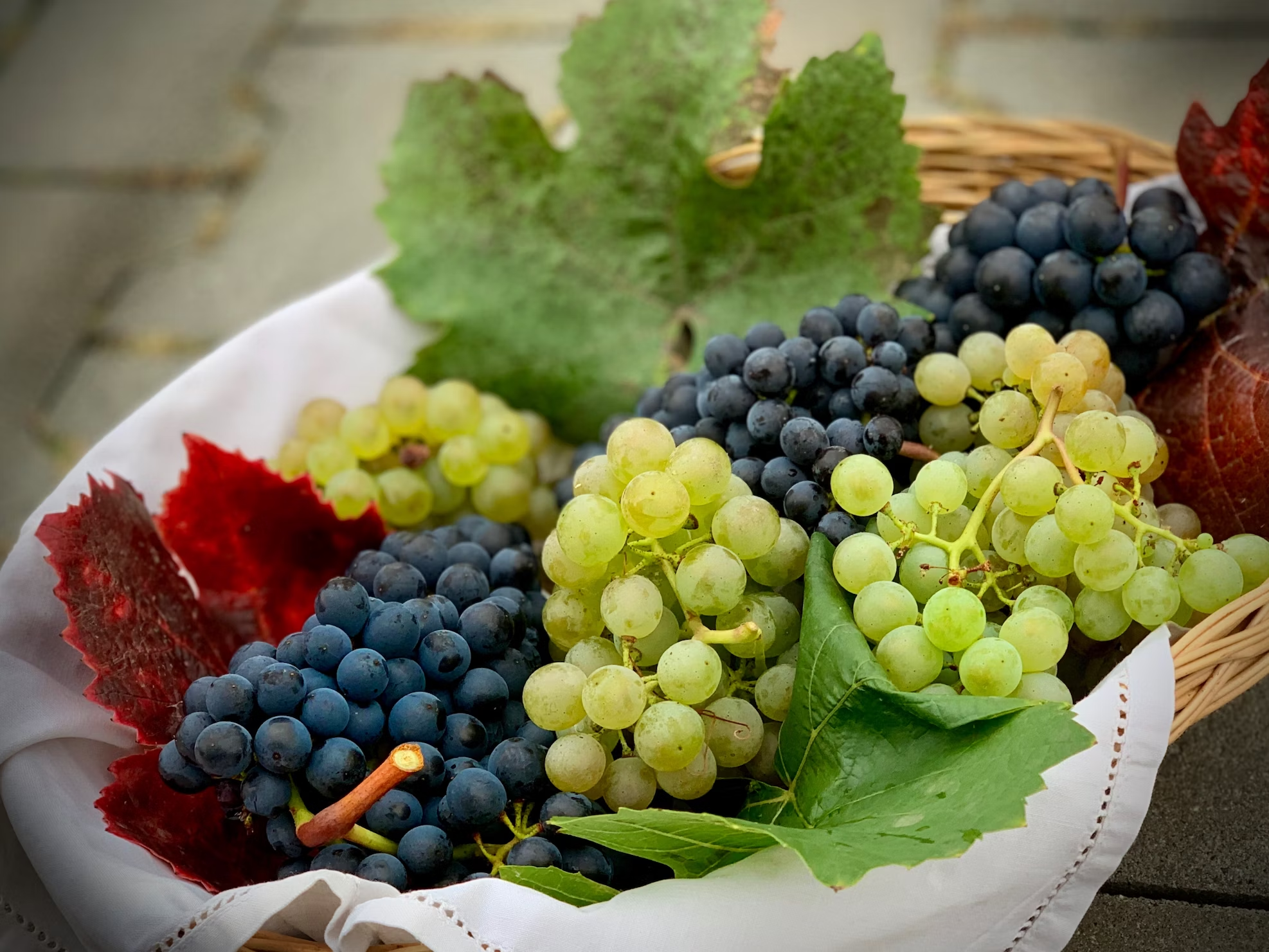- Wine Color/Type
- Top Occasions
- Unique Wines
- Surprise Me!
Table Grapes and Winemaking Grapes: What’s the Difference?
A Guided Journey into the World of Grapes with Vino Voss
There are some key differences between table grapes and winemaking grapes (Photo: Günter Hoffmann, Unsplash.com)
Have you ever wondered why the grapes you buy at the grocery store are so different from those used in winemaking? If so, you're not alone. The world of grapes is incredibly diverse, and understanding the difference between table grapes and winemaking grapes is key to appreciating the art and science of winemaking. In this blog post, we'll explore the three key factors that differentiate these two types of grapes: size and seed content, sugar and acid levels, and skin thickness.
Size and Seed Content
One of the first differences you'll notice between table grapes and winemaking grapes is their size. Table grapes are usually larger, designed to be eaten as-is. They are also commonly seedless for a more pleasant eating experience. On the other hand, winemaking grapes, the most common ones are European winemaking grape varieties, Vitis vinifera, which are generally smaller and contain seeds. The seeds play a crucial role in the winemaking process as they contribute tannins - compounds that add complexity and structure to the wine.
Sugar and Acid Levels
Sugar and acid levels are another critical difference between table grapes and winemaking grapes. Table grapes tend to be less sweet and have lower acid levels, making them more palatable for direct consumption. In contrast, winemaking grapes require high sugar levels to ensure sufficient alcohol content in the final product. They also have higher acid levels to balance the sweetness and provide a refreshing taste. This balance of sugar and acid is one of the things that makes the wines from Vino Voss so distinctive and enjoyable.
Skin Thickness
The skin of the grape plays a significant role in winemaking, contributing color, flavor, and tannins to the wine. Winemaking grapes usually have thicker skins, which allow for a more prolonged fermentation process, essential in developing a wine's full flavor profile. Table grapes, on the other hand, have thinner skins, making them easier to eat.
Can Table Grapes Be Used for Winemaking?
In summary, while they may look similar, table grapes and winemaking grapes are different in several crucial ways. While table grapes are typically enjoyed fresh as a tasty snack, they are not commonly used for winemaking. The grapes chosen for winemaking, known as wine grapes, differ from table grapes in terms of their sugar content, acidity, and overall flavor profile. Wine grapes are cultivated specifically for the purpose of crafting wines, with varieties like Chardonnay, Cabernet Sauvignon, and Merlot being among the most popular. These grapes have characteristics that contribute to the complex flavors and aromas desired in wine production. While it's not impossible to make wine from table grapes, the resulting product may lack the depth and complexity found in wines made from specialized wine grape varieties. Therefore, winemakers generally prefer grapes that are specifically bred and cultivated to meet the unique requirements of the winemaking process.
Latest articles

